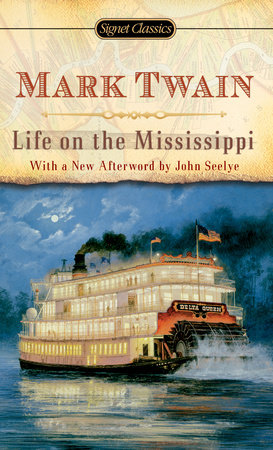Life on the Mississippi

At once a romantic history of a mighty river, an autobiographical account of Twain's early steamboat days, and a storehouse of humorous anecdotes and sketches, here is the raw material from which Mark Twain wrote his finest novel, Adventures of Huckleberry Finn.
Hannibal, Missouri, on the banks of the Mississippi River, was host to riverboat travelers from around the world, providing a vigorous and variable atmosphere for the young Samuel Clemens to absorb. Clemens became a riverboat pilot and even chose his pen name—Mark Twain—from a term boatmen would call out signifying water depth at two fathoms, meaning safe clearance for travel. It was from this background that Life on the Mississippi emerged. It is an epochal record of America’s growth, a…